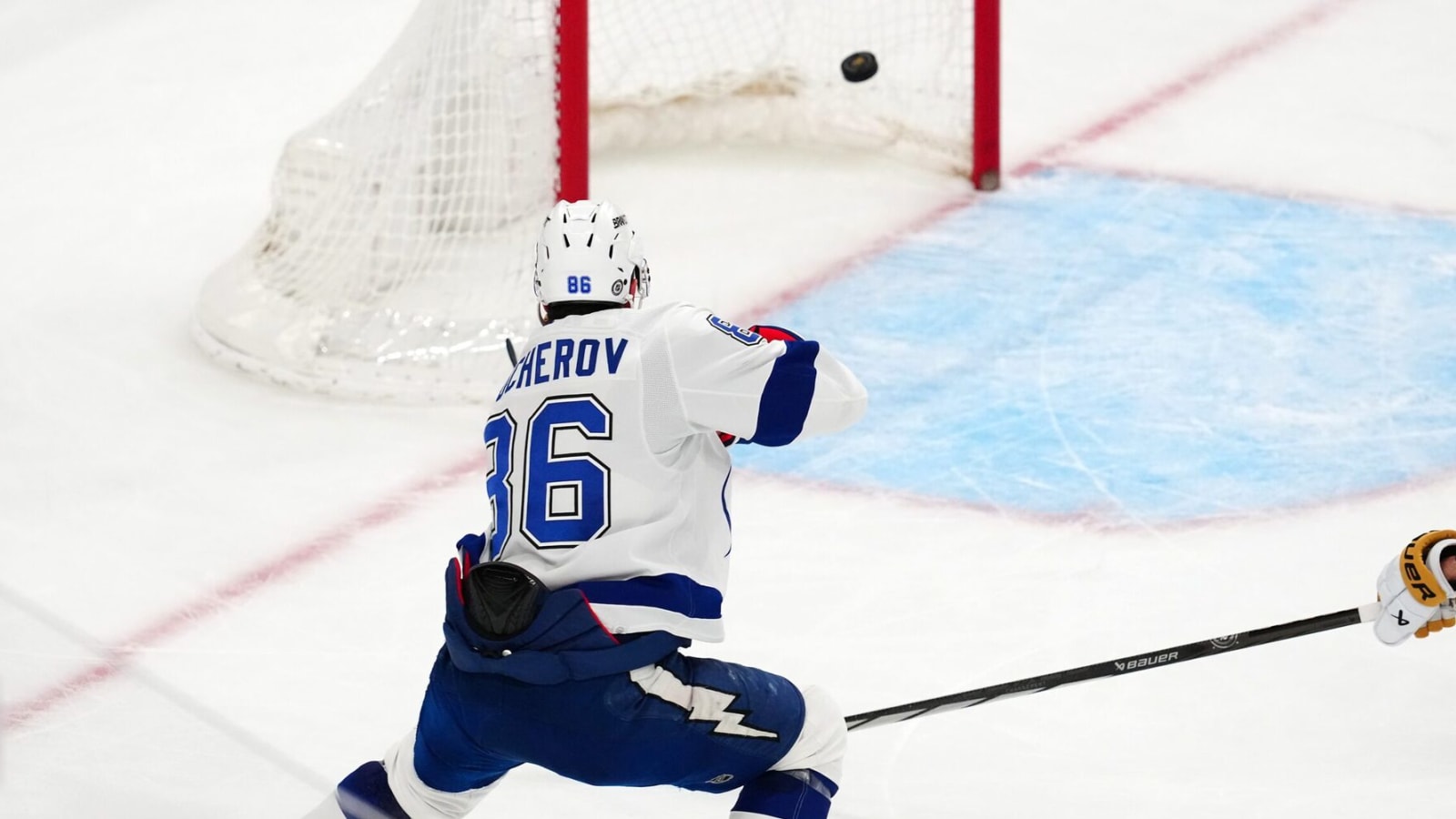
It wasn’t that long ago that pulling the goalie was an afterthought.
As the game clock approached the one-minute mark, the coach gave the signal. The goalie made a mad dash. With an extra attacker, a short, chaotic burst ensued. The trailing team didn’t score too often. The leading team didn’t seal the game into the empty cage much either.
But over the last decade, things have shifted. Goalie pulls happen earlier and are more successful, resulting in more goals for both teams. And believe it or not, empty-net goals have quietly become big business.
Yes, really. They impact scoring races, free agency, egos, coaching decisions, betting markets and, ultimately, our perception of performance. Today, we’re exploring the rising influence of the empty-netter on the NHL.
The Trend
If it seems like empty-net goals are being scored at record rates these days, that’s because it’s true. Check out the visual below to get a sense of the trend’s skyward movement.

Empty-netters are sizzling… through this past weekend, there were 0.42 empty goals per game.
Let’s put that in perspective. In 2005-06 — the first year of the salary cap — empty-net goals represented just 2.4% of goals. About every 42nd goal was an empty-netter. Vinny Prospal and Michal Handzus led the league with five empty-net points each.
Today? Through the first quarter of the 2024-25 schedule, 7.0% of all goals are sans goalie. Every 14th goal is now into an empty net. In fact, Nathan MacKinnon already has more empty points (six) than anyone in Sidney Crosby’s rookie season. Sure, it’s still early in the year. This record-breaking pace could come down a little. But the trend is going one way.
The Takeaways
1. NHL coaches today have an average of 14 empty-net goals to award per season — they go to superstars.
In 2023-24, teams averaged 13.8 empty-netters. Winnipeg led the charge with 24, tying Dallas‘ long-standing record from 2015-16. Tampa Bay (23) and Florida (21) rounded out the top three last season. On the bottom end, the lowly Sharks had the fewest with just four.
With all these free goals and assists to distribute, who’s getting the candy?
It’s not the penalty killers and shot blockers that do the dirty work and are trusted with defensive responsibilities in the game’s first 58 minutes. From NHL.com, here are the most empty-net points from the last three full seasons (2021-22 to 2023-24).

In the list’s top 50, there are only two forwards — Brandon Tanev and Michael Rasmussen — who play traditional bottom-six roles (i.e., under 16 minutes per night). Two out of 50!
Of the empty-net point leaders above, only Hagel spends more than 35 seconds per night killing penalties. And sure, Crosby and Draisaitl are elite faceoff specialists. But let’s call it what it is — veteran superstars being rewarded with low-calorie points to prop up their stat lines.
You can make the argument that players with strong offensive instincts have the skills (or the swagger without repercussion) to launch pucks from distance at the empty net to effectively end the game. Your everyday grinder might not try that. Or miss a little more often. But when you work through the empty-net point leaders, you mostly find players protecting late leads that coaches otherwise avoid using in defensive situations.
2. Empty-net goals decided the scoring title last year.
While it wasn’t headline news, Nikita Kucherov set the NHL record for empty-net points (14) last season. The mark was previously held by Blake Wheeler (12 in 2018-19). Now, this isn’t a record that gets someone elected to the Hall of Fame one day.
But it did win Kucherov his second Art Ross Trophy — putting him in an elite 16-man fraternity of two-time scoring champions. Here’s the race without the benefit of empty-net points.
| Player | Total Points | Empty-Net Points | Points With a Goalie |
| 1. Nathan MacKinnon | 140 | 8 | 132 |
| 2. Nikita Kucherov | 144 | 14 | 130 |
| 3. Connor McDavid | 132 | 5 | 127 |
I happened to catch an exhausted Kucherov float for 3:11 against an empty net — including 2:12 in a row — in a 7-4 win against Montreal last April. This was not about being the best option, or helping the team secure a playoff spot. This was about getting free points to fend off MacKinnon for the Ross.
Hey, I get it. Who knows how many chances you may get to win a major award? No one will remember that MacKinnon outproduced Kucherov 132-130 with an actual goalie occupying the net.
This isn’t about Kucherov. It’s about the new normal. Empty-net points are an increasingly common part of how star players expect to be rewarded. And that’s whether the player is elite, passable, or downright bad defensively. With early goalie pulls now a part of hockey, this is no longer about a handful of cheap points in a long season. It’s about eight, 10, or 14 breezy points per year.
3. Empty-net goals alter the perception of player performance.
While it’s rare that empty-net action decides an award, with the rise of empty-netters and superstars getting these cushy minutes, it’s going to become more frequent. A quarter of the way through the 2024-25 season, it’s already meaningfully affecting the Ross race.
Here are the point leaders through Tuesday night — without empty-net points inflating the results.
| Player | Total Points | Empty-Net Points | Points With a Goalie |
| 1. Martin Necas | 35 | 0 | 35 |
| 2. Jack Eichel | 34 | 2 | 32 |
| 3. Sam Reinhart | 31 | 1 | 30 |
| T4. Kirill Kaprizov | 34 | 5 | 29 |
| T4. Leon Draisaitl | 30 | 1 | 29 |
| T4. Cale Makar | 30 | 1 | 29 |
| T4. Nathan MacKinnon | 35 | 6 | 29 |
Carolina‘s Martin Necas’ face finally made it to NHL.com’s main stats page. The current NHL point leader’s smiling mug is always the first thing you see on the site. But Necas needed to significantly outperform the field first.
Why? He has zero empty-net points. His early season competition in MacKinnon (6), Kaprizov (5), and Rantanen (5) are getting favorable deployment with no goalie. Necas has been on the ice for just 27 seconds total with the yawning cage.
The well-rounded Hurricanes primarily deploy some combination of defensive stalwarts Jordan Staal and Jordan Martinook. Makes sense. But in Tampa or Colorado, those minutes go to talented stars padding their stat lines — not their shutdown guys.
4. Empty-net points affect free-agency decisions.
A general manager is never going to tell you that moves are made to appease ownership or the fanbase. Or because a player reached an arbitrary milestone that year. But free agency is also a sales exercise to generate enthusiasm in the locker room and in the arena. Short-term wins, if you’re lucky.
Here’s a few examples of empty net points influencing free agent walk years this past summer:
- Jake Guentzel, Tampa Bay: Jake’s glowing stat line: 30 goals, 77 points in only 67 games. That’s with 12 empty-net points — tied for second-most in NHL history. Defensive metrics rate him among the league’s shakiest defensive forwards, but as Crosby’s linemate he’s been an empty-net merchant. Without them? Guentzel had a bland 23 goals and 65 points last year.
- Jonathan Marchessault, Nashville: A 42-goal season was an easy sell. But having never previously topped 30 goals, Marchessault’s breakout sniping was always sus as the kids say. A closer look under the hood shows seven empty goals — tied for most in the league. A 35-goal, 62-point season next to Jack Eichel doesn’t move the needle like 42 goals, does it?
- Steven Stamkos, Nashville: While you’d hope blockbuster signings aren’t done over six points, here’s Stamkos with the empty-net bump: still a 40-goal scorer, still a point-per-game player. That’s our Stammer! Without? 37 goals, 75 points in 79 games as a specialist on the league’s #1 power play.
Now, these players were always going to get paid. But each benefitted from the optics of inflated production via empty-net access. How much did they benefit? We can’t know for sure. Yet, it’s not hard to see in these examples how that extra million or year gets more defendable from bulked-up numbers.
Closing Thoughts
Empty-net goals are an increasingly big part of hockey.
For the “points are points” crowd, you can argue that some combination of power play opportunities, linemates, ice time, or competition greatly influence any point banked. And you’d be right. But being put on the ice without a goalie is not the same. Say it with me: there is no goalie. These are free points. And many of the forwards used in these situations are glaring defensive liabilities.
Empty-net points are affecting how we perceive players. This important game state now drives player usage, statistics, reputations, awards, and free agency. With the trend on the rise, it’s time to give the empty-net some attention after years as a lonely afterthought.
More must-reads:
- Every Vezina Trophy winner since the 1981-82 NHL season
- Canucks believed to have inquired about Predators' Steven Stamkos
- The '500 NHL goals club' quiz
Breaking News
Trending News
Customize Your Newsletter
 +
+
Get the latest news and rumors, customized to your favorite sports and teams. Emailed daily. Always free!








